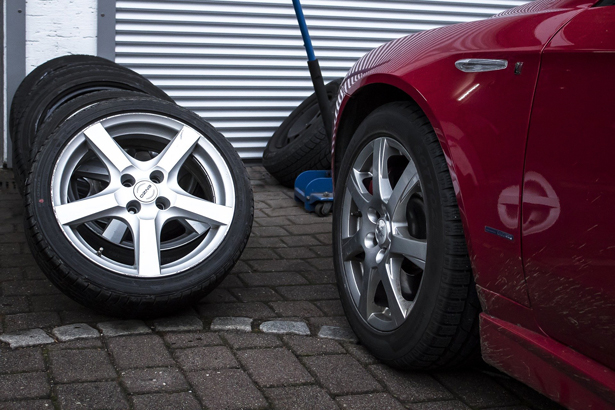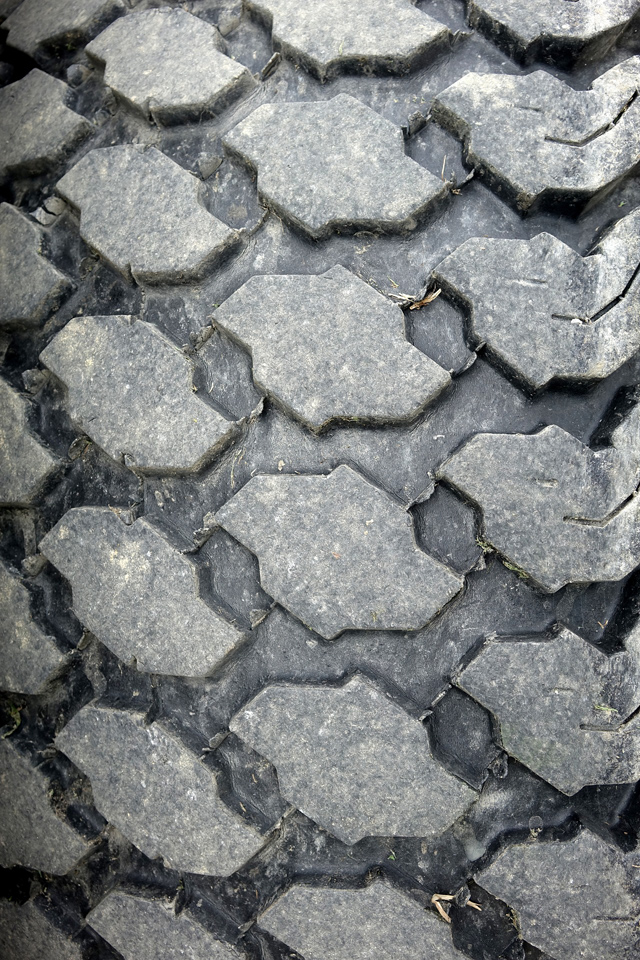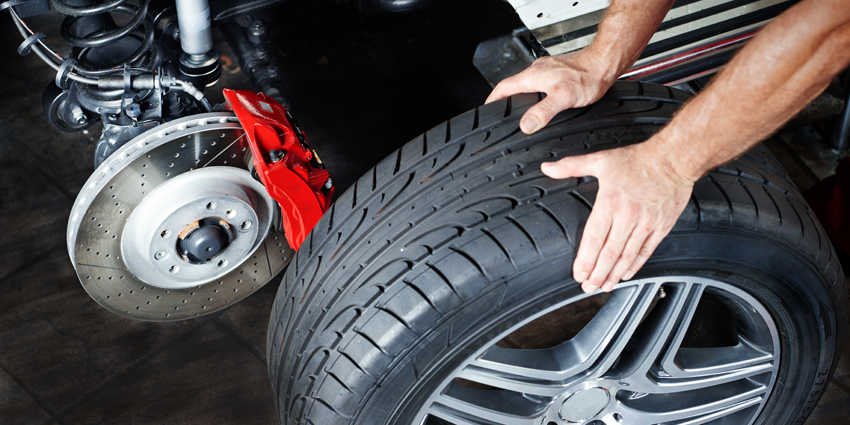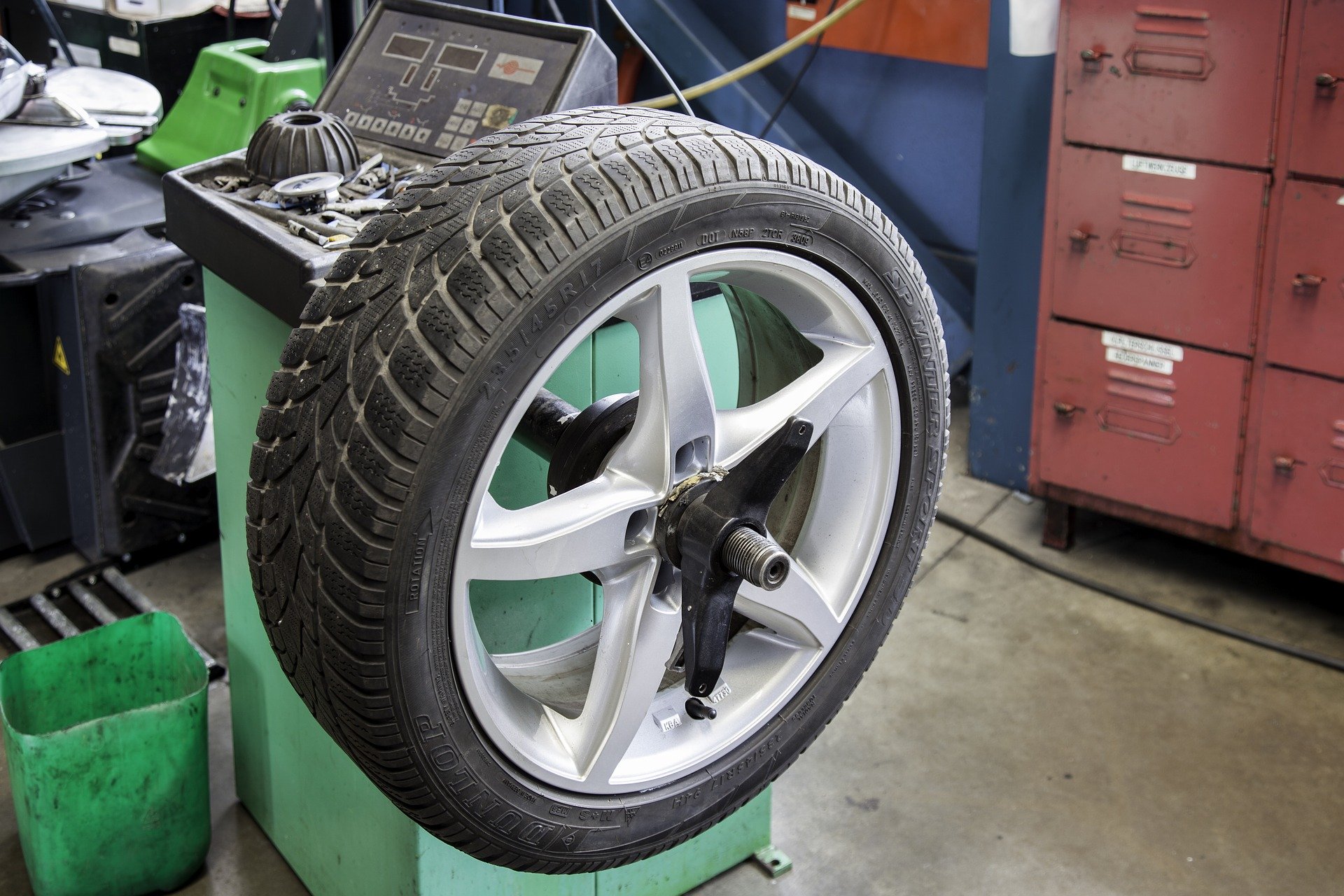product comparison
Changing tyres - the right tyres for the right season
Always in spring and autumn the tyres of most vehicles have to be changed. We help you to determine the right time for the change and give you hints and tips for changing them yourself. In addition, we explain the difference between tyre types and what you should pay attention to when changing tyres.
When exactly do I have to change my tyres?
There is no right time to change a tire. Nevertheless, the mnemonic "from O to O", i.e. from October to Easter, is still a good orientation guide. Depending on the region, however, this period can be postponed or even extended, because the weather conditions in the lowlands are different from those in the mountains. Even though the winters in Germany have been very mild for years now, driving with winter tyres during the cold months is recommended. This is because the rubber compound of the tires ensures a secure grip on the road even in cool temperatures. Wheel changes and regular tyre checks are immensely important for your safety. According to the law, the wheels must be adapted to the weather conditions, otherwise you could face heavy fines.
Differences between summer and winter tyres and all-season tyres
The difference between summer, winter or all-season tyres starts with the different tread structures. Summer tyres have coarse tread cuts and do not have sipes like winter or all-season tyres. Winter tyres have an altogether finer tread and have the so-called sipes on the entire tread surface. The sipes form additional gripping edges that interlock with the ground and provide grip even at low temperatures. The all-season tyre is a mixture of both tyre types in terms of tread structure. The all-season tyres are also often called all-weather tyres and have a coarser tread pattern than the winter tyre. The sipes are only distributed in the middle part of the tread. The efficiency on icy and snowy roads is therefore reduced.

Another difference is the rubber compound of the tyre types. Depending on the season, a different rubber compound is recommended, which has optimum friction in the corresponding temperature ranges. Different types of rubber with different temperature characteristics are used to achieve the best possible performance. In short, summer tyres become too hard in winter and winter tyres become too soft in summer and performance is limited.
The change of car tires at different seasons is therefore sensible. It should be noted that all-season tyres are not ideal for summer or winter. The rubber compound is too soft for the summer and therefore wears out faster. In winter they are not as efficient as winter tyres due to the smaller number of sipes.
What do the markings mean? How much profile do my tires need to have?

Your tyres should always have sufficient tread. Even though 1.6 millimetres of tread are permitted by law, the ADAC recommends a much greater tread depth. Three millimetres for summer tyres and four millimetres for winter tyres. The tread depth is important for optimum braking distance and vehicle control. In addition, the risk of aquaplaning can be significantly reduced with an appropriate tread depth. You can check the exact tread depth using a tread depth gauge. Even a one-euro coin will give you information, as the golden edge is 3 millimetres wide. When you insert the coin into the tyre tread, the edge should disappear in the tyre. It is best to repeat this test at several places in the car tire. In addition, the newer tyres have a tyre wear indicator. These are small bars that are arranged in the grooves of the tread. They are generally arranged at right angles to the running direction. The letters TWI are often found next to them. If the bars are worn down to the point where they are level with the tread, the tyre should be replaced.
In addition, the age of the tyres is also decisive and should not be underestimated, as the rubber hardens over time due to external influences such as UV radiation. Even if one assumes a service life of eight to ten years, a tyre should be checked for damage from the age of 6 years on. Because, depending on the kilometres, driving style and the surface, car tyres can show cracks and damage even earlier. The age of the car tyres can be determined using the DOT number. The first two digits stand for the calendar week, the last two digits for the year of manufacture. A tyre with DOT 3217 was therefore manufactured in the 32nd calendar week of 2017.
In addition, the ECE marking is located next to it. Tyres with the E1 marking are approved for Germany. Furthermore, winter tyres also carry the M+S symbol, which stands for slush and snow. However, car tyres manufactured after 1 January 2018 must carry the new Alpine symbol. This is a snowflake symbol surrounded by a mountain. From 30 September 2024, all winter tyres must have the Alpine symbol.
An overview of the tyre change procedure
Technically correct, changing the summer and winter tyres is actually called wheel change. Just changing the tyres would mean having to pull the tyres onto the rim. This should only be done with the right tools in a specialist workshop. You can change the wheels yourself. To do this you will need the following tools:
- the jack
- cross key
- torque wrench
- wire brush
- gloves
There are a few things to consider when changing tyres. We have therefore created a detailed step-by-step guide for you here:
- Strongly secure the vehicle
First of all, the vehicle should be parked on a level place and secured against rolling away. To do this, apply the handbrake or, in the case of automatic transmission, move the lever to position "P". It is best to change the wheels with gloves to protect yourself from dirt and minor injuries. - Loosen the wheel nuts
Remove the hubcaps. Now slightly loosen the wheel bolts of the vehicle by a quarter turn each time. - Jack up the car.
Make sure that the jack is correctly positioned on the vehicle. Now the vehicle can be lifted. - Unscrew the wheel
Now loosen the screws crosswise and remove the car tire. - clean
Not to be forgotten is the cleaning of the wheel contact surface and the wheel bolts with a steel brush. The wheel sits more securely and is also easier to remove. On this occasion you should also take a look at the brakes. The brake discs should be smooth and without grooves. The pads of the brake pads should not be below the wear limit. - put on the wheel
Before putting the tyre on, some screwdrivers swear by greasing the wheel hub. However, make sure that no grease gets on the brake discs and the wheel nuts. Now the wheel nuts can be hand-tightened. - tighten
After the above steps have been carried out on all wheels, the vehicle can be set down carefully. Now the wheel nuts have to be tightened crosswise with the correct torque. - mark
The dismantled tyres can then be marked. They should also be checked for damage and sufficient tread before storage.

Never combine summer and winter tyres on the same vehicle. It is recommended to change the car tires axle by axle and to fit the tires with the better tread on the rear axle. Because the rear axle ensures the tracking stability of the car. After changing the wheels, the first thing to check is the tyre pressure and correct it if necessary. You can find the correct tyre pressure and also the correct torque of the wheel studs in the manual or the operating instructions of the vehicle. After the first 50-100 kilometers you should tighten the wheel bolts again.
Can you change tyres with RDKS yourself?
Since 1 November 2014, the EU has made a tyre pressure monitoring system (TPM) mandatory for new cars. Pressure monitoring systems are divided into indirect and direct systems. In the case of indirect systems, sensors already installed in the vehicle measure the tire pressure. Therefore, the wheels can be changed in the usual way. The control system must then be relearned. You will find instructions for this in your vehicle manual. Changing tires in vehicles with direct DCS has become more complex. Here the sensors are mounted directly on the tire. In most cases special tools are required and the sensors must be checked for malfunctions such as damaged sensors, corrosion or weak batteries. Changing tyres on vehicles with RDKS is therefore no longer as easy as it used to be. You can find out which system your vehicle uses in the vehicle manual.
How do I store my tyres?
After you have checked your tyres for their condition and removed stones or other foreign bodies from the tread, they can be stored for the coming season. If you store the tyres at home, they should be in a dark place, for example in the cellar. You should also stack the car tyres on top of each other and with increased tyre pressure, a rim tree is perfect for storage. The air pressure should be about 0.5 bar above normal pressure. The environment must also be cool and dry. If you store the tyres without rims, they should be stored upright.
tyre change in the workshop
If you don't feel confident about changing the wheels, don't want to get your hands dirty or just want to play it safe, have the tyres changed in a specialist workshop. The following aspects speak in favour of commissioning the workshop:
- The specialist workshop can better detect damage to the car tyres
- it is checked whether a tyre needs to be balanced (describes the removal of an unbalance to minimise wear, noise and vibration)
- the workshop has the right tool - also for balancing the tyres
- the car tyres can be stored for a fee
We have the right tools and accessories for changing tyres as well as the tyre pressure sensors at a reasonable price. If you are unsure which articles you need, you are welcome to contact our customer service with the 17-digit chassis number. We look forward to hearing from you!
To the tire pressure sensors range













